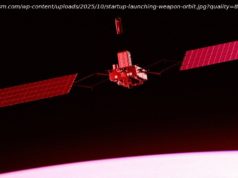What do a pretzel, a lock of hair and a scream have in common? They’ve all been used to explain the highly complex scientific research honoured with a Nobel Prize to the general public.
In recent years, the various Nobel science prize committees have gone to great lengths to make the pioneering discoveries understandable to a broad audience, occasionally finding creative and amusing ways of getting their message across.
«I think we’re sometimes a little scared of being too adventurous when presenting the Nobel Prize because it’s serious and important,» Sven Lidin, who served for 12 years as a member of the Nobel chemistry committee, told AFP.
This year’s Nobel Prize season kicks off on October 2 with the medicine prize, followed by the physics prize on October 3 and the chemistry prize on October 4. The prizes for literature, peace and economics will be announced in the days that follow.
The tough task of conveying the prizes’ significance beyond academic and scientific circles is one the various committees take seriously.
«If you’re going to reach out to others than scientists then you have to make a lot of effort and also make sure it’s accurate,» said Lidin, who chaired the Nobel chemistry committee from 2012 to 2014.
‘Boo!’
Currently a chemistry professor at Lund University, Lidin stunned the audience and elicited laughs when he shouted «Boo!» under a painting inspired by Edvard Munch’s «The Scream» to explain the 2012 Nobel chemistry prize.
«Do you remember the last time you got really scared? The dryness of the mouth, the heart that skips a beat… These are signs that your body is getting ready for flight or fight,» he said at the time.
Lidin was explaining the discovery of «G-protein–coupled receptors».
Not many people may know what they are, but they’re crucial: they help our cells react to adrenaline and hormones, explaining how cardiac cells know to raise the heart rate when we are startled, for example.
And in 2014, the chemistry Nobel honoured «the development of super-resolved fluorescence microscopy», according to the prize citation.
Hmmm. Once again, you’re not alone if you don’t know what that is.
To explain it, Lidin surprised the audience by pulling out a lock of his own hair to show how the prizewinners had laid the foundations for the development of nanoscopy, an ultra-powerful microscope that enables scientists to closely look at the inner workings of a cell, revolutionising disease research.
«It’s very important to not just make a show out of (the announcement), but to also make it relevant,» he said.
‘Not trained celebrities’
Thors Hans Hansson, a member of the Nobel physics committee, made headlines last year when he brought a cinnamon bun, a pretzel and a bagel to explain the field of topology, a highly specialised mathematics field studying unusual phases or states of matter.
Referring to the two holes in the pretzel, the one hole in the bagel, and the shape of a bun, Hansson demonstrated that topology explains how a material’s shape can be completely deformed into a new one without losing its core properties.
The committees are also keen to explain why the public should care about the research, providing examples of practical applications.
The G-protein-coupled receptors discovery, for instance, has led to life-changing methods for antihistamines and psychiatric medications with fewer side effects.
And for topology, the physics committee noted that it may one day yield superfast and small computers.
But the pretzel-bagel-bun example—which Hansson said was «fun»—didn’t just come out of the blue.
The Nobel physics committee has a large staff of social media and web experts responsible for making sure the information they provide is comprehensible.
«We are scientists… we are not trained celebrities,» Hansson said with a chuckle, adding that committee members get advice from media experts before the prize announcements.
«People give you comments: ‘Is what you said understandable? Or did you go into lots of technical garbage that no-one would understand?'»
But Hansson warned that a vivid illustration should never jeopardise the prize’s prestige.
Clearly, «it shouldn’t be simplified to the extent that it is wrong,» he stressed.
«We try to protect this (award). We want to see that every year… when people see who won this prize, they will say ‘Wow, this was really something, it was really worth it’.»
Explore further: Physics prize up next on Nobel schedule






